Posts by: Michael Banks
Photography prize, Tesla collision course, climate-change cross stitch
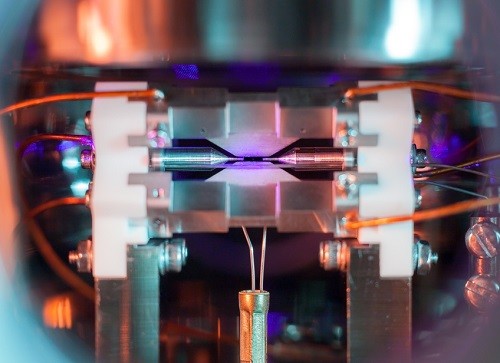
Pale blue dot: image of a strontium atom in an ion trap bags national photography prize (courtesy: David Nadlinger – University of Oxford)
By Michael Banks
An image of a single positively-charged strontium atom that is held in an ion trap by electric fields has won a national science photography competition organised by the UK’s Engineering and Physical Sciences Research Council.
Taken by PhD student David Nadlinger from the University of Oxford, the image shows the light emitted from the atom when it absorbs laser light tuned to a specific frequency. The picture was taken through a window of the ultra-high vacuum chamber that houses the ion trap.
“The idea of being able to see a single atom with the naked eye had struck me as a wonderfully direct and visceral bridge between the minuscule quantum world and our macroscopic reality,” says Nadlinger. “When I set off to the lab with camera and tripods one quiet Sunday afternoon, I was rewarded with this particular picture of a small, pale blue dot.”
Moving onto space, the successful launch of SpaceX‘s Falcon Heavy rocket last week resulted in a Tesla Roadster (formally owned by SpaceX boss Elon Musk) in orbit around the Sun. Used only as a test mass, the car featured a spacesuit-clad mannequin called “Starman” in the driver’s seat.
Citizen science, astronaut growth, water-flipping physics
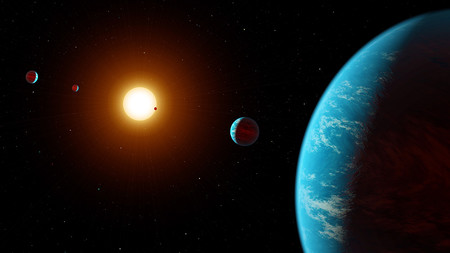
Planet hunting (courtesy: NASA/JPL-Caltech/R. Hurt)
By Michael Banks
This week the American Astronomical Society is meeting in Washington, D.C. At the conference it was announced yesterday that a citizen-scientist project called Exoplanet Explorers had used data from the Kepler mission to detect a new five-planet system.
The 27 authors include, among others, the astronomer and broadcaster Chris Lintott and the particle physicist and broadcaster Brian Cox. Exoplanet Explorers was featured prominently on the Australian TV show Stargazing Live in April and another author on the paper is the Australian TV presenter Julia Zemiro, who is affiliated with the Australian Broadcasting Corporation. You can read the paper here. (more…)
View all posts by this author | View this author's profile
The 10 quirkiest physics stories of 2017
By Michael Banks
From the law of defecation to CERN emojis, physics has had its fair share of quirky stories this year. Here is our pick of the 10 best, not in any particular order.
Marten on display
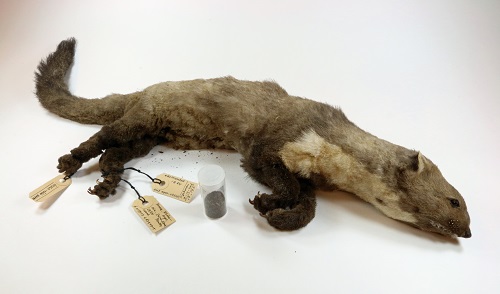
Stuffed. (Courtesy: Natural History Museum of Rotterdam)
You may remember the strange story last year of a marten that entered an electrical outbuilding at CERN and gnawed through a 66 kV transformer. The move ended up frying the weasel-like creature and triggering a wide power outage at the Large Hadron Collider (LHC). But when another marten met its doom in November 2016 by chewing on an 18 kV transformer, the animal was kept for posterity, rather than being disposed of like its chum. The 18 kV marten was stuffed and earlier this year went on display at the Rotterdam Natural History Museum’s Dead Animal Tales exhibition. “With a growing human population size and ongoing habitat destruction and urbanization, man and animal more often share the same environment. We have to be prepared for more collisions,” museum director Kees Moeliker told Physics World. “This tiny creature shutting down the LHC is, in a way, poetic, and as such deserves a place of honour in our exhibit.”
View all posts by this author | View this author's profile
A puzzling neutrino detector, the best way to crumple cans
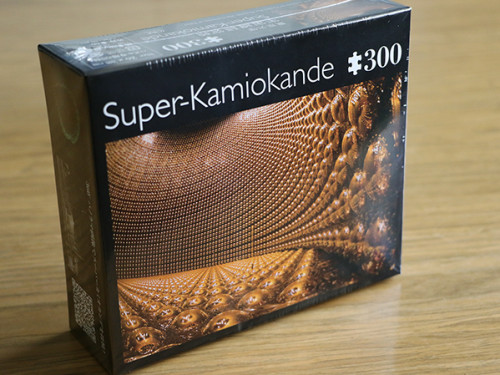
Standard model: Super Kamiokande jigsaw puzzle (Courtesy: ICRR)
By Michael Banks
If you are looking for a Christmas present for a puzzle lover, the Institute for Cosmic Ray Research (ICRR) in Tokyo, Japan, has just the thing. It’s created a 300-piece jigsaw puzzle of the Super Kamiokande neutrino detecter in Kamioka, Japan. The detector is a giant stainless-steel tank filled with 50, 000 tonnes of ultra-pure water and lined with 13,000 photo-multiplier tubes that detect the Cherenkov radiation released when a neutrino collides with a water molecule. In other words, it’s a jigsaw puzzle featuring water and lots and lots of identical tubes.
Costing ¥1500 (£10) and with a finished size of 38 x 26 cm, a limited number of the jigsaws went on sale in late October. But its fiendish nature doesn’t seem to have put anyone off: the puzzle sold out within days. Jigsaw enthusiasts, however, will be pleased to know that, as, the ICRR is planning to release more. (more…)
View all posts by this author | View this author's profile
Riding around KAGRA

Tunnel vision: entry point to the KAGRA gravitational-wave observatory in Kamioka. (Courtesy: Michael Banks)
By Michael Banks in Kamioka, Japan
Of all the places I have been, I can’t remember being asked to ride a bicycle for 3 km down a dimly lit tunnel that had water dripping – sometimes pouring – from the ceiling.
But that’s what happened today when I visited the KAGRA gravitational-wave observatory in northern Japan.
Rising bright and early – a common occurrence this week thanks to jet lag – I took the Shinkansen from Tokyo to Toyama.
View all posts by this author | View this author's profile
Reforming Japanese science
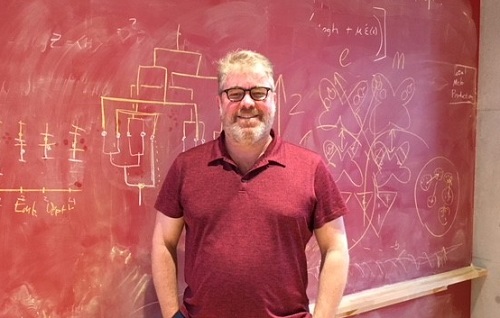
Making changes: John Hernlund.
By Michael Banks in Tokyo, Japan
Following this morning’s talk at the Tokyo Institute of Technology (as well as a mock earthquake evacuation drill that took place just afterwards), I took the opportunity to visit the Earth-Life Science Institute (ELSI), which is located in a neighbouring building at Tokyo Tech.
Like the Kavli Institute for the Physics and Mathematics of the Universe (IPMU), which I visited yesterday, ELSI is part of the World Premier International Research Center Initiative (WPI).
ELSI began in 2012 and has funding for 10 years from the WPI. There are around 100 people working there, the majority of whom are from outside Japan. Its main aim is to understand how life began on Earth and how that can be applied to the search for life on other planets. It covers a range of disciplines from astrophysics to microbiology.
View all posts by this author | View this author's profile
A decade of success

Looking forward: Hitoshi Murayama. (Courtesy: Kavli IPMU)
By Michael Banks in Tokyo, Japan
Just a couple of weeks ago the Kavli Institute for the Physics and Mathematics of the Universe (IPMU) marked its 10th anniversary.
Located on the University of Tokyo’s Kashiwa campus, the institute held a big celebration that was attended by hundreds of researchers including Nobel prize winners. The occasion was even marked by the creation of a bespoke sweet (see image below right).
View all posts by this author | View this author's profile
What’s next for superconductivity research?
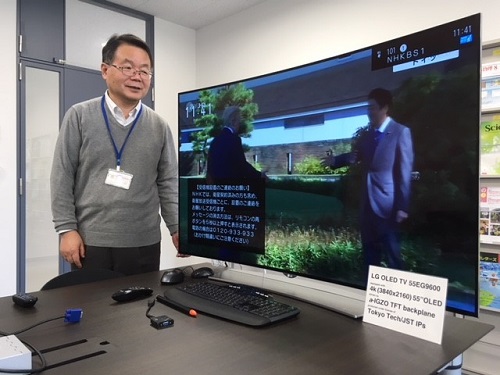
Seeing the bigger picture: Hideo Hosono from the Tokyo Institute of Technology. (Courtesy: Michael Banks)
By Michael Banks in Tokyo, Japan
This morning I took the train to the Tokyo Institute of Technology, which lies about 10 km south-west of Tokyo.
I met with Hideo Hosono who rose to fame almost a decade ago when he found a new class of superconductors known as iron pnictides.
In a 2008 paper, Hosono and colleagues discovered superconductivity in LaOFeAs at 26 K. The crystalline material comprises layers of lanthanum and oxygen sandwiched between layers of iron and arsenic — and is doped with fluoride ions.
View all posts by this author | View this author's profile
Giving scientific advice in Japan

Sound advice: Tateo Arimoto
By Michael Banks in Tokyo, Japan
US President Donald Trump might be in Japan right now eating hamburgers and playing golf with the recently re-elected prime minister Shinzo Abe, but his presence didn’t stop me and Physics World editor Matin Durrani having our own high-level meeting as we began our week-long tour of the country.
After landing at Haneda airport in Tokyo, we headed straight to our downtown hotel for a meeting with Tateo Arimoto, who is director of science, technology and innovation at the National Graduate Institute for Policy Studies and a principal fellow of the Japan Science and Technology Agency (JST).
Over a light dinner of sushi, rice and vegetables, we had a wide-ranging and frank discussion about the role of scientific advice in Japan.
View all posts by this author | View this author's profile
Konnichiwa Japan
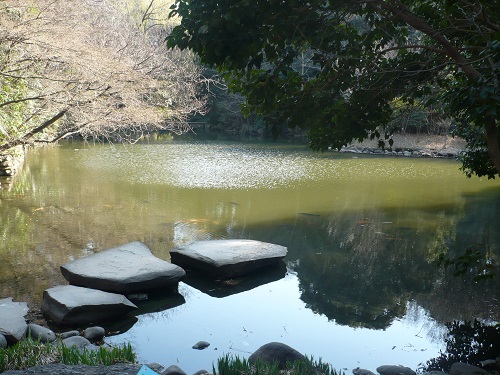
An area of tranquility at the University of Tokyo (Courtesy: Michael Banks)
By Michael Banks
Suitcases packed, Matin Durrani and I will be travelling to Japan over the weekend for a week-long road trip that will see us heading to Tokyo, Osaka, Kyoto and Kamioka.
It’s a busy schedule that includes meeting with senior policy-makers and visiting a number of high-profile institutes.
The main purpose of our visit is to gather material for a special report on Japan that will be published in February 2018 (for this year’s reports on China and the US see here and here).
View all posts by this author | View this author's profile